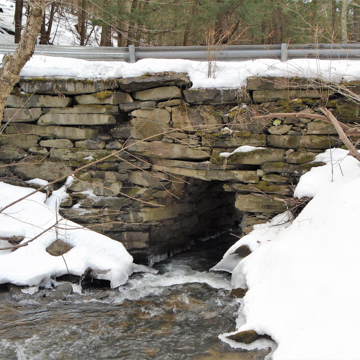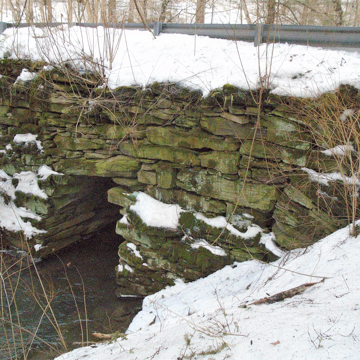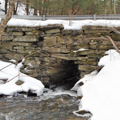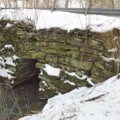While the Starrucca Viaduct's ( SQ16) soaring arches stride across Starrucca Creek near the county's northern border, this clapper bridge barely straddles a tributary to Tunkhannock Creek far to the south. This bridge type with its rare dry-laid rubble corbeled arch is sometimes called a slab bridge because of the large stone slab serving as the arch's keystone. Clapper bridges date to the thirteenth century in England, where “clapper” means “plank” in the Sussex area. Early English clapper bridges, however, are narrow pedestrian bridges on stone piers, not arches. Though the date of this bridge is unknown, it is probably early nineteenth century.
You are here
Clapper Bridge
Early 19th century. Over a tributary of Tunkhannock Creek, just west of PA 2067, 0.7 miles south of PA 92
If SAH Archipedia has been useful to you, please consider supporting it.
SAH Archipedia tells the story of the United States through its buildings, landscapes, and cities. This freely available resource empowers the public with authoritative knowledge that deepens their understanding and appreciation of the built environment. But the Society of Architectural Historians, which created SAH Archipedia with University of Virginia Press, needs your support to maintain the high-caliber research, writing, photography, cartography, editing, design, and programming that make SAH Archipedia a trusted online resource available to all who value the history of place, heritage tourism, and learning.





